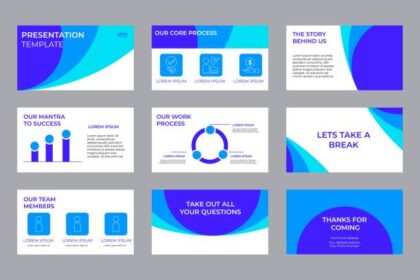The Rise of Modern Web Frameworks
Web development is constantly evolving, and today’s developers are expected to keep up with frameworks that offer more power, flexibility, and performance. Among these, Next.js stands out as a go-to choice for building fast, scalable web applications using React. It’s not just popular for its simplicity, but for the robust features it brings to both client-side and server-side development.
For those learning modern tools and techniques, especially in a structured environment like a full stack developer course in Chennai, understanding how Next.js works is crucial. It goes beyond traditional front-end frameworks by offering server-side rendering, static site generation, and more, all while maintaining the developer-friendly nature of React.
In this guide, we’ll explore what makes Next.js a game changer for full stack development and why it’s worth adding to your developer toolkit.
What Exactly Is Next.js?
Next.js is an open-source React framework developed by Vercel that simplifies the process of building web applications. It’s essentially React with superpowers. While React focuses on building UI components, Next.js takes it further by adding features like routing, server-side rendering, static site generation, and API routes, all built into the framework.
Here are a few highlights that make Next.js powerful:
- File-based routing: No need to configure complex routers; your file structure dictates your app’s routes.
- Server-side rendering (SSR): Pages can be generated on the server for better SEO and faster initial load.
- Static site generation (SSG): Generate pages at build time for incredible speed.
- API routes: Build backend endpoints within the same app no need for a separate backend framework.
These capabilities help developers create web applications that are faster, more SEO-friendly, and easier to maintain.
If you’re pursuing a Web development course in Chennai, chances are you’ll come across React early on. Learning Next.js alongside React gives you a significant advantage when working on more complex or production-level projects.
Why Full Stack Developers Should Care
Full stack developers manage both the frontend and backend, often dealing with challenges that require tight integration between the two. Next.js offers an elegant solution by supporting backend functionality right within your front-end project.
Let’s say you’re building a dashboard application. With Next.js, you can:
- Create frontend UI using React.
- Add backend logic (e.g., handling form submissions or database queries) using API routes.
- Use server-side rendering to fetch and show real-time data.
- Deploy everything as a unified application.
No need to spin up a separate Express server or configure CORS—everything lives together in one codebase.
This level of cohesion is why full stack developers love Next.js. It helps streamline their workflow and maintain cleaner, more maintainable code. It’s no surprise that many projects covered in a Web Designing course in Chennai use Next.js to combine design sensibilities with performance-focused development.
Key Benefits of Using Next.js
Next.js doesn’t just make development easier, it makes applications better. Here’s how:
1. Better Performance
Thanks to static site generation and automatic code splitting, your app only loads what it needs. This results in quicker page loads and improved user experience.
2. Built-in SEO Optimization
Traditional single-page applications (SPAs) built with React often struggle with SEO. Next.js solves this with server-side rendering and meta tag management, ensuring your content is crawlable by search engines.
3. Simplified Routing
Instead of setting up complex route configurations, just drop your components into the /pages folder. The file structure becomes your routing structure.
4. Scalability
From small projects to enterprise-level apps, Next.js is built to scale. You can start small and expand effortlessly with serverless deployment options like Vercel or AWS.
Learning these features in a classroom environment or from a Training Institute in Chennai at FITA Academy ensures you get the practical experience needed to implement them in real-world scenarios. It also builds confidence when working on collaborative projects or freelance gigs.
Real-World Use Cases
Next.js isn’t just for developers—it’s used by some of the world’s biggest companies. From eCommerce giants to media platforms, businesses turn to Next.js when they need reliable, fast, and scalable solutions.
Here are some common use cases:
- eCommerce platforms: For fast-loading product pages and great SEO.
- Content-rich blogs or news sites: Using SSG and SSR to handle high traffic.
- Dashboards and admin panels: Easy to integrate both front-end and back-end in one project.
- Portfolios and personal websites: Quick to deploy and SEO-ready.
If you’re working on client projects or building your own product, knowing how to leverage these features is a game-changer. Staying updated with Key Trends in Full Stack Development ensures you remain competitive and can deliver modern, efficient solutions that meet industry demands.
Getting Started with Next.js
Getting started with Next.js is easy, especially if you’re already familiar with React.
bash
CopyEdit
npx create-next-app@latest my-nextjs-app
cd my-nextjs-app
npm run dev
With just these commands, you’re already running a powerful web app. From here, you can begin exploring advanced features like dynamic routing, incremental static regeneration (ISR), and custom APIs.
Why Next.js Belongs in Your Stack
Next.js is more than just a trend, it’s a practical and powerful framework for building modern web applications. Whether you’re building small static sites or enterprise-grade platforms, it offers the tools and performance you need to succeed.





